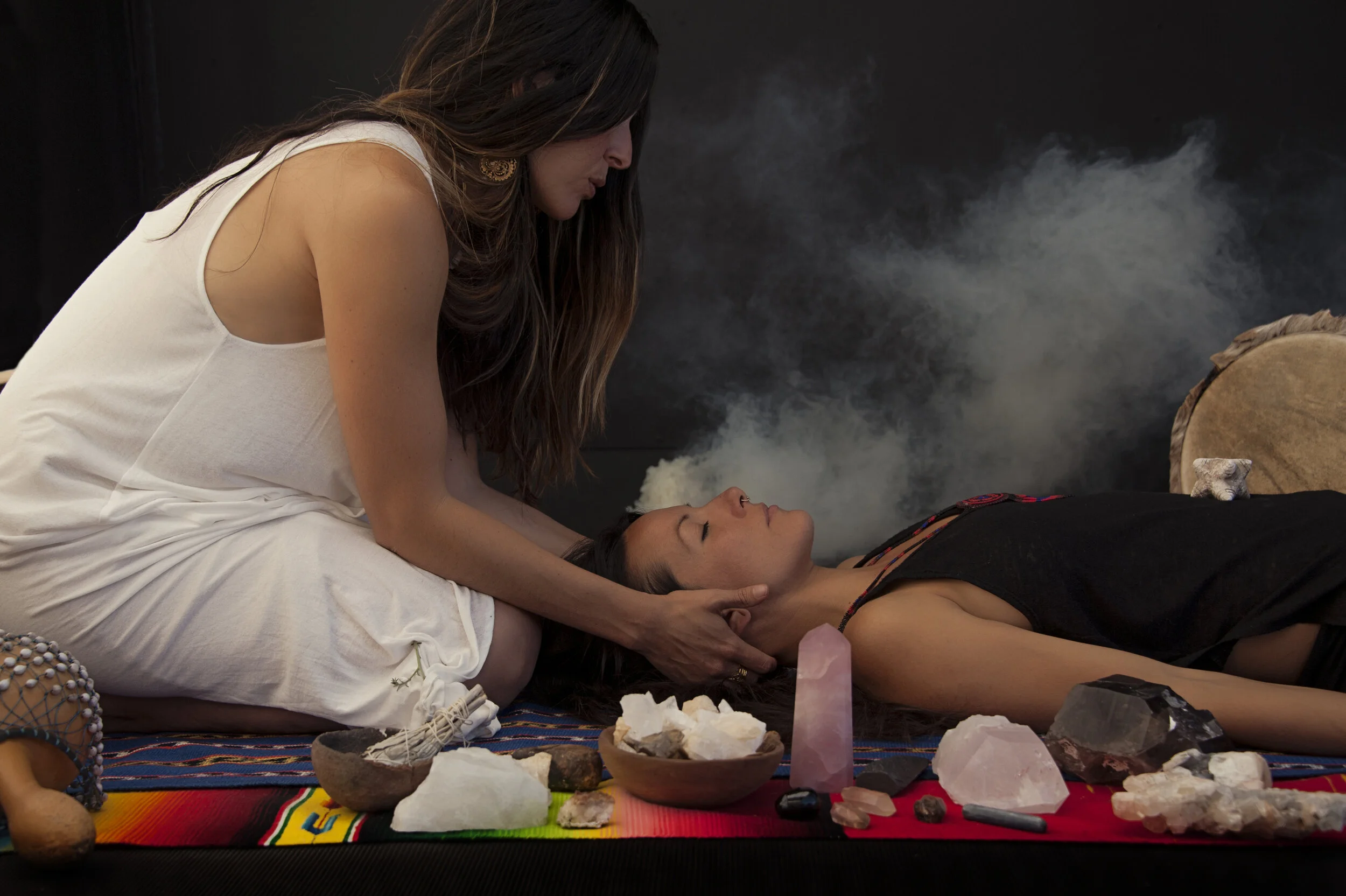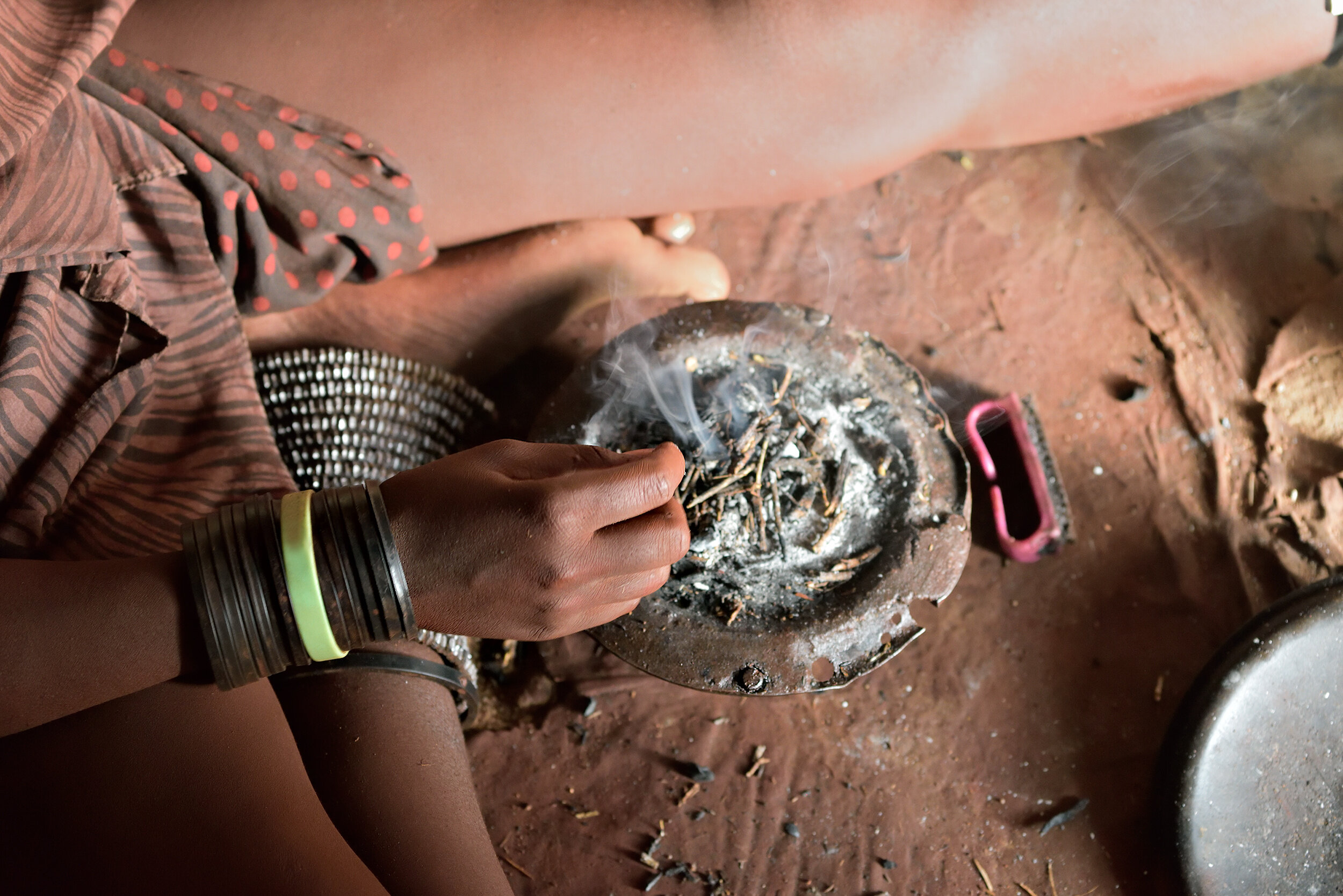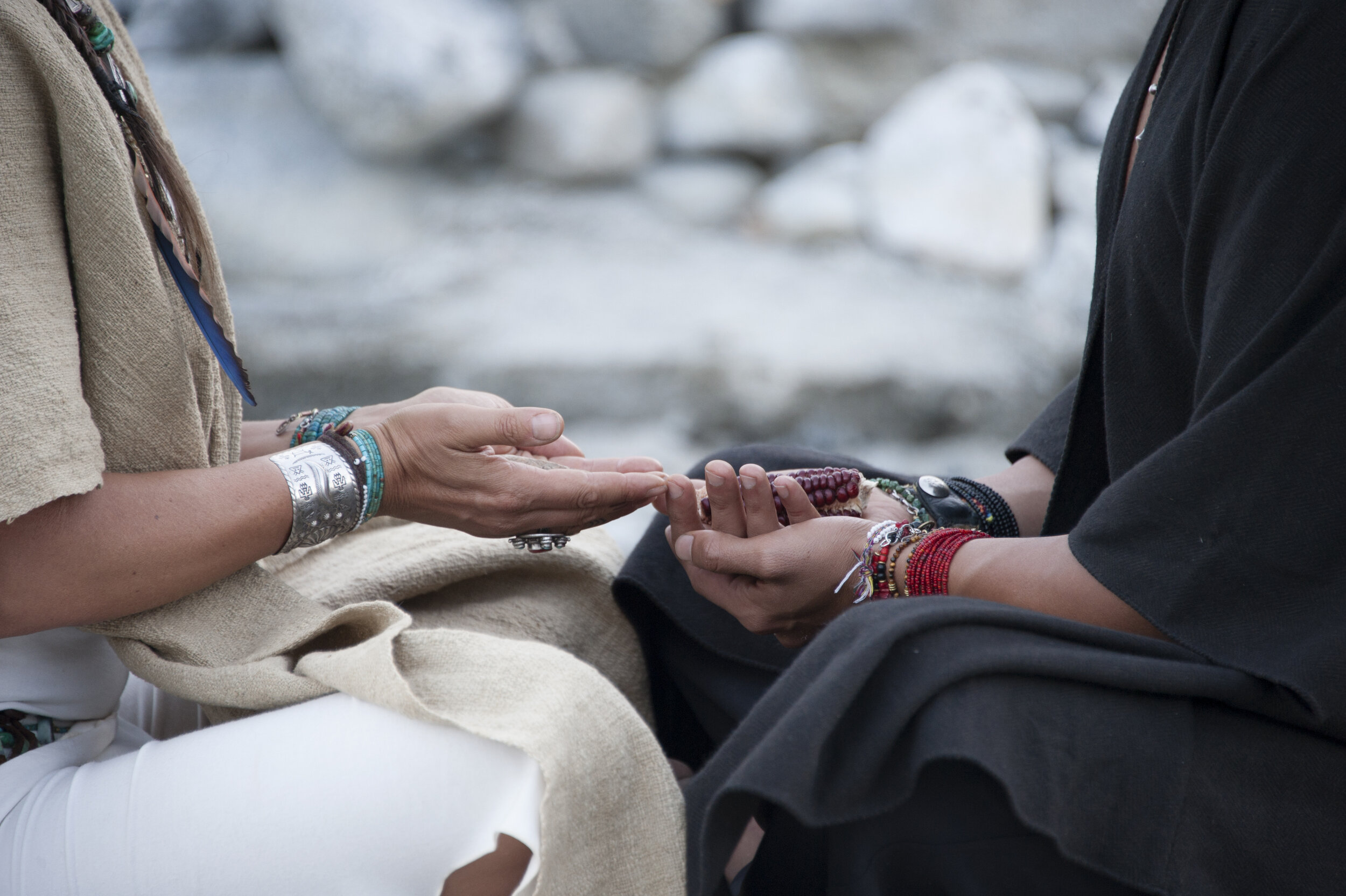Shamanic Healing For Chronic Illness
Many people turn to shamanic healing in the face of acute and chronic illnesses. As a tool to address the underlying spiritual causes of disease, shamanism is great. I have seen people with chronic health challenges such as Lyme disease, chronic fatigue syndrome, and fibromyalgia use shamanic healing with great results.
No form of spiritual healing should replace modern medicine and most shamanic healers are not licensed, health professionals. Having trained in shamanism does not legally qualify someone to claim to diagnose, treat, cure, or prevent any disease.
How Does a Shaman See and Work with Sickness?
Shamanism is the oldest known form of human spirituality. it goes back tens of thousands of years. Shamans were the healers, advisors, and spiritual functionaries in many tribal cultures all over the world.
Shamanic healing addresses the spiritual component of dis-ease. I like to tell my clients that their bodies, minds, and spirits are not individual things by overlapping things that interact. A shaman helps to create the spiritual conditions under which a person can heal. If you were to break your arm, you would go to the hospital to have the bone set and to get a cast. The cast doesn't heal your arm, it creates the conditions for the bone to mend.
A shaman might see illness as excess energy stuck to the client's energy system. Or, there may be a loss of power or soul essence. A shaman may see issues that stem from past lives or one's own ancestors.
Every shamanic practitioner works a little differently, so I'll speak for my own experience. When I journey on behalf of a client, I ask to be shown things about them that need healing, and exactly which ceremonies would be most beneficial on that day. I will see the client's subtle body, aura, and chakras which will give me a sense of what might be wrong. Sometimes I'm able to draw a client's attention to problems they weren't aware of.
What Does a Shamanic Healer Do?
First, many people use the terms shamanic healer, shamanic practitioner, and shaman interchangeably. In my own practice, I refer to myself as a shamanic practitioner. This is because one does not give oneself the label of "shaman" in my tradition.
Shamans are very concerned with restoring power to their clients. Chronic illness, depression, fatigue, low self-esteem, poor boundaries, suicidal feelings, and other common symptoms of power loss include chronic illness, depressed fatigue, low self-esteem, poor luck, and hard-to-diagnose health conditions.
A shaman is a type of healer who uses an alternate state of consciousness to enter the unseen world, which is made up of all unseen beings.
Shamanic healing consists of three things:
Entering an altered state of consciousness
Traveling in the spirit world
Working with helping spirits.
Beyond that, there are many ceremonies a shaman might perform. Here is just a small list:
Soul Retrieval
Shamans in many cultures perform soul retrieval ceremonies in response to something called soul loss. Soul loss is one of the effects of trauma and can lead to depression, anxiety, and dissociation. It's basically a fracturing of the soul body where some essential component gets lost.
Childhood trauma, in particular, is strongly linked to negative health outcomes such as chronic disease.
Untreated Trauma is so common, that nearly 100% of my clients come to me with either emotional or physical symptoms stemming from the trauma. Shamans use powerful spirit connections in order to find and return lost soul essences
Ancestral and Past Life Healing
Many shamanic healers also perform ancestral and past life healing ceremonies. This includes helping the client to connect with their ancestors and Guides, as well as resolving any karmic issues from past lives.
Current scientific research has shown a detectible transgenerational inheritance of trauma in humans and other animals. Epigenetics is an exciting branch of research that shows how our genes might express themselves differently. For example, we can detect epigenetic traces in the grandchildren of Holocaust survivors.
Shamans have long understood the importance of working with and healing our ancestors. Our own wellness is linked to our family history on a physical, mental, and spiritual level.
Shamanic Extraction
A shamanic extraction is a form of energy healing performed by a shaman to remove energetic intrusions. Energetic intrusions are just unwanted energy and thought-forms that get stuck in people's energy bodies. This energy isn't intelligent, like with a possession. It's like getting mud on your shoes.
As we move around through the world, sometimes unwanted energy sticks in our etheric field. This can be especially troublesome when we spend time in crowds or around people with strong negative feelings. People can also send out bad thoughts about us without intending to cause harm, but the energy of that sticks with us.
Spiritual intrusions can cause all kinds of problems because they block up the energy body. I have had a client with a frozen shoulder find relief and a better range of motion after an extraction. People with chronic illnesses can often benefit from extraction ceremonies as well.
It serves as a cleaning and tune-up of the energy body and the chakras. Thiis allows the subtle energy in your body to flow more freely and supports your health.
Power Animal Retrieval
One method that shamans use to restore power to clients is called power animal retrieval. Shamans have a connection to their spirit animals. These spirit animals, who they call power animals (PAs), transmit emotions and energies that impact the spirits of others through shamanistic rituals.
Frequently connecting clients with their own power animals can bring healing. Power animals can provide spiritual protection, guidance, and help keep the energy body intact. One of the major effects of receiving a power animal is just a greater sense of well-being. This alone can help create a healing state.
Spiritual Wound Healing and Curse Unraveling
Events in our lives have the ability to affect our soul bodies. Sometimes these soul bodies can receive wounds as the result of psychic attacks, or merely harsh words. If you've ever felt wounded by someone's words you know what this is like.
One form of magical or psychic attack is a curse. A curse is a spiritual act meant to harm another. There are lots of different ways curses can work, but they can cause illness, create calamity in your life, and reduce your power.
A famous type of psychic attack is the "evil eye" which actually uses the gaze and emotional energy to damage the energy body. This is like punching a hole in your skin. It causes damage but also leaves you open to infection and blood loss if you aren't careful. Curses and attacks such as these can turn spiritual issues into illnesses.
Shamans can work on behalf of their clients to unravel curses. They can also heal spiritual wounds.
How does Shamanic Healing Differ From Other Modalities Like Reiki?
Reiki is a form of energy healing. Reiki practitioners are primarily healers who have been trained in the art of maintaining good health and treating injuries, illnesses, and other physical ailments by establishing close personal relationships with various diagnostic energy centers within each human being which comprise chi (energy force) or ki(the vital breath).
The practitioner channels this universal energy through their own hands into the person.
Reiki, acupuncture, tai chi, and qigong work at the level of the energy body. They all work by manipulating or enhancing the subtle energies of the body. This is also called the etheric body. Shamans sometimes work on the energy body, usually to remove blockages, called intrusions.
However, most shamanic healers work at a different level of the spirit. The shaman specializes in health the soul body, also known as the astral body. The soul body can be damaged or wounded. You can lose essence from it during an illness, surgery, or as a result of trauma. Practitioners tend to take a holistic approach and are focused on restoring power to clients.
Besides working on multiple spiritual bodies, shamans also differ from other modalities in their work with helping spirits. A practitioner goes through training and initiations to"become the hollow bone." This is becoming a clear channel for the spirit to pass through and work. II do not take credit for any healing that takes place, I'm just a conduit.
Shamanism is not a new age practice. Some people will mix shamanic healing with other modalities, but the practices of shamanism have been around for tens of thousands of years.
Long Term Benefits of Shamanic Healing
With chronic health conditions, you want to make sure that whatever you're doing works for a long time.
You may wonder, "Is there any scientific evidence that supports the effectiveness of shamanic healing for chronic illness?" Mainstream science has really just begun to look at shamanic healing, but there are a few interesting bits of research.
There is contemporary research showing that shamanic healing causes physical, mental, and emotional changes in some chronic illnesses and that the changes last a long time. For example, a couple of studies were conducted with women with Temporomandibular joint disorders (TMDs). received shamanic healing. There was a reduction in the pain that did not decrease when the women were re-contacted 9 months later.
Scientific research into shamanic states and healing is pretty new, but there are some amazing things coming out. In a recent study of 500 shamanic practitioners using drumming to journey, their brain-state, measured by an EEG, was unique but close to that of someone on psilocybin.
Much research in the medical community focuses on plant medicine like ayahuasca, peyote, and psilocybin. This makes sense from a medical perspective - looking for patentable drugs and therapies.
Personally, I started studying shamanism to help with a chronic health condition. I have been able to live symptom-free for years. This is my personal anecdote, but I can speak to the effectiveness of shamanic healing over time.
Finding a Shamanic Healer to Work With
Finding a good fit with a healer is important. When people contact me for a session, I will refer them to a trusted colleague if the fit isn't good. the practitioner must always place the safety and wellbeing of the client first.
Shamanic practitioners are individuals and there is no governing body or anything, so they will each work in different ways. Here are a few things I would look for when you're trying to find a healer:
Shows Compassion - A practitioner should be an empathetic listener, and come from a place of kindness and wanting the best for their clients.
Honors Confidentiality - While most spiritual healers are not acting in the capacity of medical professionals, they need to take your confidentiality seriously. It's important to me that my clients feel free to share whatever they need to with me. If I were to post about clients on social media or blab about them to others, that would be a huge violation.
Has Great Integrity - Your shamanic practitioner must have impeccable ethics. This can be hard to determine up front. A practitioner should be open about as much as possible, without crossing personal boundaries. I allow my clients to ask me practically anything - so they can be comfortable with who I am.
Is Highly Trained - One can take a weekend class, or read a book about shamanism. That does not prepare that person for taking on clients. I didn't see a single client until I had more than 3 years of training with specialized training in soul retrieval, deposession, wound healing, curse unraveling, and teaching. A practitioner should be able to tell you about who they've trained with and for how long.
Maintains Good Boundaries - Good boundaries are as important for a shamanic practitioner as they are for a therapist. I've had clients ask to meet me for coffee which I politely declined. I have had people reach out who were in close relationships with someone I was close to. I told them I was happy to refer, but I don't want to cross that boundary. While people can share incredibly personal information with me in session, the relationship is always professional.
Beyond these qualities, understand that there should be an exchange for healing services. For the most part, this means money. Modern shamans live in a world where their physical needs are not taken care of by a tribe. In indigenous cultures, you might be expected to bring a valuable gift to a shaman to receive healing. The energy exchange is extremely important.
Some practitioners ask clients to fill out personal assessment questionnaires. Others require payment at the time of book. These small differences in business practices are normal and nothing to worry about by themselves.
A Balanced and Aligned Approach to Healing Chronic Illness.
One should maintain a balanced and aligned approach to healing chronic illness. See your doctor and follow through on treatments while supporting your healing journey with traditional medicine, integrative practices, energy work, and nutrition. Know what's working (and that some things take time to show full effect).
I highly recommend having a spiritual practice on a daily basis. This could be meditation, yoga, prayer - anything that nurtures your spirit.
If you are interested in talking to me about your own healing journey just click here.
How does shamanic healing work?
The shaman's role has been crucial in most Aboriginal cultures for thousands of years. They serve as spiritual and cultural leaders and teachers. The shaman often has the power to heal and perform spiritual rituals, such as healing people, animals, or objects. The shaman communicates with the spirit world, communes with ancestors of the tribe to help bring positive change into their lives.
Some shamanic practitioners today, who may not be part of indigenous culture, heal using standard tools common to all shamanic cultures. Some refer to this set of tools as core shamanism. Anthropologists studying various cultures, from the tribes of South America to Australian Aborigines in the mid 20th century, found that shamans everywhere were using a lot of the same tools.
What is shamanic healing?
Shamanic healing is the oldest of all spiritual healing modalities. It was practiced by our ancestors for millennia, going back to prehistoric times. It is the power of the mind, spirit, and body working together to restore balance. Shamanic healing uses tools that are common to all shamanic cultures. These include drumming, chanting, dancing, fasting, and other rituals to bring about a sense of wholeness in oneself.
What is core shamanism?
Shamanic practices often include specific tools that are common to all shamanic cultures. Anyone who wants to develop a relationship with the spirit world can use these tools. These tools help you communicate with spirits and understand your role in this universe. A shamanic practitioner who wants to be a competent healer will undergo a significant amount of training over many years.
Shamanic Journeying
The primary shamanic tool is the shamanic journey. When a shamanic practitioner journeys, they enter into a trance state, journeys out of the body to other realms of reality, and works with helping spirits. This is in contrast to most forms of meditation which might include trance states but usually do not include out-of-body travel or direct communication with spirits.
Shamanic Worlds
Shamans recognize three different spiritual worlds. The first spiritual realm is called the middle world, the spiritual aspect of the physical world. The second spiritual world, or lower world, is a place that is very natural and filled with plants and animals. The third is the upper world which is much more ethereal and filled with human, human-like, and mythical beings.
A practitioner will travel in one or more of these worlds during a shamanic journey.
Helping Spirits
Shamans always work in conjunction with helping spirits. Some people use the term spirit guides, but this is misleading. Not all helping spirits act as guides. Some do act as teachers.
Most people are somewhat familiar with the term power animal. A power animal is one type of helping spirit. A power animal is one of many animal spirits that have volunteered to work with a person for healing, power, or learning.
How do the shamans of different cultures heal?
The way that shamans heal varies from culture to culture. In many cultures, the shaman heals through prayer and ceremony. Shamans will sing, pray, chant or dance to bring healing energy into their bodies. They may also use objects such as sacred drums or rattles, which are used in healing ceremonies.
All shamans utilize altered states of consciousness for healing. Most cultures use rhythmic methods to access the state necessary for journeying. Shamans can achieve trance through drumming, chanting, or dancing. Some cultures use psychedelic plants or mushrooms referred to as plant medicine.
There are many different types of plant medicine, including psilocybin mushrooms, peyote, fly agaric mushrooms, and ayahuasca.
What is ayahuasca?
I mention ayahuasca here because it is a topic of great interest. Some people think that shamanism is synonymous with the use of “aya”. I do not use it, nor do I lead ayahuasca. It’s possession and use would be illegal in Maine.
Ayahuasca is a plant medicine used by people indigenous to Peru and other parts of the Amazon Basin. It is comprised of two different plants. One plant contains DMT, a highly hallucinogenic compound. DMT breaks down in the stomach, so the second plant has an MAOI inhibitor to allow DMT to pass through the digestive tract.
Ayahuasca "trips" can last for hours, during which people report hallucinations and purging through diarrhea and vomiting. There is no antidote. Once you buy the ticket, there's no getting off the train.
Recently ayahuasca tourism has become very popular, and many people are illegally importing the plants into other countries. Ayahuasca can be a hazardous drug as it can lead to serotonin syndrome and even death. I respect indigenous medicine entirely, but, from a shamanic perspective, it isn't necessary for journeying. When taken out of context and administered by untrained people, any plant medicine can be dangerous.
What are some of the spiritual rituals that a shamanic practitioner might perform?
There are a wide variety of healing rituals and ceremonies shamanic practitioners might choose from depending on the client's needs. The shamanic practitioner may use drumming, chanting, dancing, and healing practices to help the client feel better. A shamanic practitioner will always do a journey to diagnose or assess the spiritual roots of illness.
Anyone practicing shamanism to heal others has undergone a long period of shamanic training. A few of the ceremonies a shamanic healer might perform rituals include power animal retrieval, extraction, or soul retrieval. These address the client's spirit to aid in their natural healing process. With physical illness, a shaman may undo spiritual blockages to a person's healing ability. A shaman is a spiritual healer and not usually a licensed medical provider (though I know some doctors who practice shamanism).
Power animal retrieval
A power animal retrieval is a type of healing journey to connect the client to their power animal. Power animals are spirits that guide and protect humans in many aspects of life. These are individual spirits with whom a client can develop a relationship. Shamans often perform power animal retrieval to restore a client's power or protect them before surgery or childbirth.
Shamanic extraction ceremony
Shamanic extraction is a healing ceremony in which a shaman removes a blockage from the client's energy system. These blockages are called intrusions. Intrusive energy get's stuck in the client's energy body and should be removed to restore proper function. Shamans perform this ceremony to heal a client by re-establishing balance in their energy system.
Soul retrieval
Soul retrieval is a healing journey in which a shaman journeys into the spirit world to retrieve a lost part of a person's soul body. This part, or essence, is often lost via trauma or shock. The shamanic healer performs this journey to aid in the healing process by helping clients regain lost essence. Soul retrieval requires specialized training and is one of the most common ceremonies performed.
How significant a role does intuition play in shamanic healing?
People who receive a calling to go through initiation and partake in shamanic studies are usually already intuitive. As a practitioner is initiated by spirit and learns to be a good healer, their intuition will increase. Once they are trained and become proficient in their craft, a shaman's intuitive abilities will help them see better what spirit is trying to communicate.
Intuition does play a significant role in shamanic practice, but in an extraordinary way. A primary goal of training is for the person to become what's called the hollow bone. A physical hollow bone allows things to pass through it unimpeded. When a shamanic practitioner becomes the hollow bone, they remove obstacles to a clear spirit channel. The intuition is sharpened by being able to communicate better with helping spirits.
How does shamanic healing help your body heal from physical illness, emotional trauma, or spiritual blockages?
Shamanic healing addresses the spiritual component of physical illness. Just as people have physical bodies, they also have minds and spirits. These different parts of each person interact and affect each other. For example, many studies show the effect of mind and body healing approaches. The mind can heal the body. The human spirit can also affect the body and mind.
Addressing the spiritual components of health allows the body or mind to heal naturally. When combined with allopathic medicine, or traditional mental health therapies, shamanism offers a powerful complementary modality. Shamanism is ideal in caring for conditions that have a spiritual origin.
Shamanic healing is particularly effective in working with trauma. For thousands of years, shamans have been performing soul retrieval to heal the fractured self.
Does shamanic healing work?
In a word, yes. I fully believe in the healing power of shamanism. I lve symptom-free from an "incurable" condition and have for years. Many of my clients get significant relief during and after sessions. I know people who have had miraculous healing as the result of shamanic work. There is also growing scientific evidence about the power of shamanic healing, but more work needs to be done.
We know that, even in studies of allopathic medicine, a person's belief system plays a big part in their healing. If you believe that shamanic healing is valid, then your mind will instruct your body to heal after a shamanic practitioner returns or unblocks the spirit's healing ability. If you believe that it doesn't work, you may suffer from the nocebo effect - where expectations create illness.
If you have a shamanic extraction ceremony done to help with healing from open heart surgery and then go out and eat three double cheeseburgers and walk around in a building full of angry people - you can undo some of the work.
Many people expect sudden and miraculous healing during a healing session. Sometimes that happens, but not most of the time. Again, shamanic healing works by creating spiritual conditions that are conducive to healing. Though most people feel some relief during a session, there is usually an integration period.
If you break your arm and go to the hospital, they will put a cast on you. The cast doesn't fix your arm, but it creates a condition that allows the bone to mend. Shamanic healing is a lot like that, and it returns the power for self-healing to take place. It can bolster your spiritual immune system and help return you to wholeness.
What's going on in the spirit realm during shamanic healing?
While spirit is essentially formless, it can be helpful to think of human beings as having multiple bodies - like Russian nesting dolls. You know you have a physical body. If you're a person who can see auras or know about them, this is part of the etheric or energy body. You also have a soul, or astral body, and a spirit body. The astral and spirit bodies are even more formless than the energy body. There are many more bodies, but these are the essentials.
The etheric or energy body
If you've done reiki, acupuncture, or Tai Chi, you have worked with the energy body. The etheric body is closest to the physical body, so they interact a lot. Acupuncture works on meridians which are energy channels the run through the body. Yoga also works with these subtle channels of energy.
Their etheric body is complex with its meridians and organs, and vessels. It can also be divided into two significant components. The etheric double occupies the same space of the body but extends a couple of inches in every direction. It has roughly the body's shape and appears a little more solid to people who can see auras. Then there is the aura, the field that extends from a few feet to a few dozen feet from the body.
Some shamanic techniques work at the level of the energy body. Extraction is the most common. With extraction, a shamanic practitioner removes unwanted energy stuck in a client's energy field - aura and perhaps etheric double. Removing this blocked energy allows the etheric body to function properly - which is critical for good health.
The astral or soul body
The astral body is more formless than the etheric body, and it exists on a plane a bit farther away from the physical body. Shamanic healers call it the soul body. During a journey, the shamanic practitioner splits off a bit of their soul body, which can travel consciously through nonordinary reality.
One of the ways shamanic healing is different from energy healing is that some techniques work directly to heal the soul body. A very common ceremony is called soul retrieval. When you experience a shocking or traumatic event, a part of your soul may leave your body temporarily to retreat to safety. If this part gets stuck and doesn't return right away, we call this soul loss. Soul retrieval returns the lost essence.
Frequently, shamanic healing can help anxiety, depression, even addiction through astral body work.
Is shamanic healing suitable for me?
I believe all people could benefit from shamanic healing work if they are open to it. Every person I have ever met has some level of soul loss resulting from life's traumas. I have used shamanism to heal my PTSD, which comes from severe soul loss.
First, you must seek out modern conventional medical or therapeutic assistance for any mental or physical illness. Shamanic healing works well in conjunction with modern practices, and you should do everything you can to take care of any issues. Shamanic care is not a replacement for your doctor.
The shamanic worldview is animism - the belief that all things have spirits. If this doesn't work with your religious practices or belief system, you may have difficulty accepting spiritual healing. I do not believe there's anything wrong with witchcraft; some of my closest friends are witches. But some belief systems might mistake shamanism for a forbidden form of witchcraft. If you held that belief, you probably would not be reading this, though.
Anthropologists and religious scholars will point out that the roots of Christianity and other formal systems of spirituality have shamanic roots. I don't believe that shamanism is incompatible with other religions. It isn't religion itself. It has no sacred books, or hierarchy of clergy, or central governing body.
To summarise, first seek medical attention for your illness. Then, think about if shamanic healing plays well with your beliefs. Finally, have a conversation with a practitioner and get all your questions answered. Only you can decide if it is right for you.
I just booked a Shamanic Healing Session; what should I expect?
First, don't expect to heal in one session completely. It can happen, but it usually takes time, depending on the issues worked on. Shamanic healing is more about restoring energy and balance than it is about magic wands that you can wave over someone's head and cure instantly.
Each practitioner will work differently, but a typical healing session will consist of a diagnostic journey followed by more healing ceremonies. The exact rituals will depend on the work the practitioner's helping spirits have directed.
Some clients will feel a sense of instant relief. For others, it may take some time before they realize the full effect of the session. Frequently the healer will suggest some integration work the client should realize the full impact of the session.
Conclusion
To summarise, shamanic healing works on a client's spiritual body to create favorable conditions for healing. The shaman acts as a conduit for helping spirits to do the work. A session might consist of many different types of ceremonies, and all practitioners work in slightly different ways. A client can expect to experience shifts during a session, but the full results of the healing will become evident with time.
If you would like to have a healing session with me - click here to get started.
Feeling disconnected? How can shamanic healing help?
My clients come to me for many reasons but one of the things I hear most often is, “I feel disconnected.” For many years, before I began to study and practice shamanism, I felt the same way, so I get it. It’s a feeling that’s hard to describe. The best way I can put it is that you feel cut off from your self, the world, even your loved ones.
Often this feeling comes with a flattening of the emotions. I have had clients describe feeling “dead inside.”
So what’s going on here, from a shamanic perspective? Also, is there anything that can help?
As I remind my clients, shamanism is a wonderful tool for addressing the spiritual components of illness or dis-ease. It does not take the place of medical help or psychological counseling.
With that in mind, it bears getting symptoms of any kind checked out by your provider. A shamanic healer can certainly help the healing process. And sometimes there may be no apparent physical or psychological cause a provider can find.
What’s the diagnosis?
In any healing session, I always begin with what’s called a diagnostic journey. This will tell me what work is in my client’s highest interest on that particular day. Many clients come to me asking for specific ceremonies. Sometimes they’re right about what they need, and sometimes they need some preliminary work before that can take place.
This complaint about the feeling of disconnection, more often than not, indicates to me what we call soul loss. Soul loss usually happens as a result of trauma in our lives, although there are a few other causes.
With soul loss, part of the soul breaks away to remain safe from what’s going on. That part can get lost and not come back. If you have ever had a shocking experience where time seemed to slow down, or you felt outside your body, or you felt like things weren’t real - this is what you’re experiencing.
How can shamanic healing help
Since soul loss is something that has occurred throughout human history, shamans all over the world have developed a technique for healing it. That technique is called soul retrieval.
Soul retrieval reunites the parts of the fractured self so that the client can re-integrate them. With re-integration, there can be a much greater sense of connection, joy, and completeness.
Many clients come to me specifically asking for soul retrieval. I still always do a diagnostic journey for them first. It’s quite possible that other work needs to happen for the soul-essence to feel safe enough to return.
I like to think of these soul parts as a fraction of ourselves that is stuck in the time it got lost. If you had soul part lost when you were 8 years old, that part is still 8 years old. It can’t grow and mature on its own, disconnected from the whole.
So we have to make that part feel safe to reintegrate. It might take a few weeks after a session for the part to completely settle in.
Once a part has been returned, however, it can bring significant power back. Imagine if you had lost your sense of smell when you were 12, and then it was suddenly returned. The world would seem richer, food would taste better. A similar thing happens when a soul essence returns.
I’ll never forget a client who, at the end of a session, excitedly told me, “I actually feel joy! I forgot what that was like.”
What is a wounded healer?
You may have heard the term wounded healer before, particularly in relationship to shamanism. It’s fair to wonder what that team means. The following is my own explanation but comes from my experience in shamanic healing of others and myself.
The wounded healer is an archetype, a thoughtform. The idea is that in being wounded, healing capabilities are opened up. I find this to be true for me and many others, and this post will explain how that works.
Traditional Shamans
In many indigenous cultures, where shamanism is still practiced, those fulfilling the role of a shaman are chosen, and not self selected. One thing that is very common is that those selected have been through some kind of serious trauma.
This trauma, might be physical, like a life-threatening illness, or even an emotional trauma. There are cultures where certain mental illnesses, as defined by Western medicine, would be seen as the beginnings of a path as a healer or prophet.
There are even stories of cultures in South America where being struck by lightning is a prerequisite for being chosen as a shaman.
Other cultures put potential shamans through ordeals - like vision quests, exposure to physical extremes, or lengthy and dangerous trials.
All of these things, whether chosen trials or involuntary traumas are initiations. I’ll speak more about initiation in a moment.
Modern Shamanism
There is no governing body of shamans in the modern world. Literally anyone could read a book on shamanism and call themselves a shaman. I’ll note that, in my tradition, one does not call oneself a shaman.
Most people I know who are shamanic healers, have years or decades of training and apprenticeship, however. But people generally self-select roles and aren’t assigned them. Shamanic practitioners choose their path.
Most of the practitioners I know are wounded healers. Most have been through serious illness, near death experiences, or other serious traumas. In my own case, I had a foot amputated, and was diagnosed with PTSD later in life. I believe that the traumas I endured made me well suited for shamanism.
Initiation
To initiate is to begin. In the world of shamanism, all of life, and even death, is a series of initiations. We are always beginning something. When we go through severe difficulty, often it is preparing us psychologically and energetically for what comes next.
My own experience is with trauma. Modern psychology will say that one of the major symptoms of trauma is dissociation. It’s like part of the psyche breaks off to protect itself from what’s happening. This makes sense when experiences are too threatening or intense. Dissociation is a defense mechanism.
In shamanic terms, part of the soul escapes, in order to protect itself. If that piece of the soul does not return there is a splitting, a loss of energy, physical and psychological symptoms. We call that soul loss.
The main practice of a shaman is called a journey. In a journey, a shaman uses tools like drumming or sacred plants to induce trance. Once trance is induced, part of the soul departs to do the work in what we call non-ordinary reality (NOR).
I believe that early dissociative experiences can prepare potential shamanic healers for journeying. It’s like the soul has a looser hold on the parts. That being said, to be effective, a shaman must go through their own healing first.
When I teach journeying, if a student has trouble, often it’s the result of soul loss. A soul-retrieval ceremony can help.
It is in the wounding and healing process that we become energetically prepared for the work to help others.
How can shamanic healing help?
How does shamanic healing work, and what are some of the tools used by practitioners?
As a shamanic practitioner, student of shamanism, and recipient of healing, I have witnessed miraculous results from healing sessions. My own healing journey brought me to the path of shamanism - and made me want to share this powerful set of tools with others.
You probably know that shamanic practitioners are spiritual healers. In that way, they address the spiritual origins of dis-ease. But how does shamanic healing help?
You have a body, mind, and spirit.
From the viewpoint of the shaman, you are a spirit. You have am unchanging core, spiritual self. Beyond that, you have a body, mind, and soul while you are incarnated on this Earth.
Disease can originate and be reflected in any and all levels of a person. Think about the last time you had the flu. Your body probably felt terrible, your mind may have experienced fatigue or the urge to isolate, or a lack of motivation. What you might not have seen, is the effect on your energetic or spiritual sides.
In a shamanic healing, a practitioner will do a diagnostic journey for you. This is to ascertain the origin of your malady, but also if there are spiritual remedies that may help. A shamanic healer may use a number of tools or ceremonies to address the spiritual aspect.
You may experience a soul retrieval - a ceremony which returns lost soul essence. Or you may need a shamanic extraction - which moves intrusive energy from your etheric field. You might receive a power animal retrieval - which introduces you to the spirit helper who will help restore your power. These are just a few of the tools available to a practitioner.
Often, shamanic healing works to clear spiritual blockages opening you to your full ability to heal yourself. Sometimes, a shamanic healer may have to work with you to clear old psycho-spiritual wound energy or even a suffering deceased spirit that may be clinging to you.
How Do Shamans See And Treat Trauma
Shamanism is particularly useful for addressing the effects of trauma.
Personal disclosure - I originally got involved in shamanism in order to treat the PTSD I had been diagnosed with. Originally I thought, "Oh, I'll just take these courses and learn how to heal myself."
What I wasn't exactly prepared for was becoming a "wounded healer." Some of my symptoms, particularly dissociation, actually helped me with shamanic journeying. Soon, I found people coming to me for help.
And I'm happy to report that I live essentially symptom-free these days. I can't claim to cure anything (the FDA or whoever would not be pleased).
What is Trauma?
When I speak of trauma, I'm talking primarily about psychological and spiritual trauma. For physical trauma, a good shaman would apply first-aid and call 911.
To simplify, trauma is something which causes psychological shock or overwhelm. Violence, abuse, natural disasters, even just witnessing these things can cause what we'd call trauma. Adverse childhood experiences (ACEs) are a form of ongoing trauma that have significant effects on the health and well-being of adults. Surgery, violent words, grief - can all also have a traumatic effect.
Trauma can present as any number of psychological conditions - most often as depression and anxiety. But dissociation - the state of feeling like things are unreal or that you are outside your body, is a telltale symptom of trauma.
We know that trauma affects the brain and the body on a physical level. The danger warning systems in the brain can become hyperactive, and there can be muscular tension and an inflammatory response in the body.
I believe that is useful to think of trauma as a systemic injury to the body, mind, and spirit - even if the medical model would disagree. What helped me, personally is treating the whole self.
From a shamanic perspective, during trauma, part of the soul escapes to safety. You dissociate. I can remember this happening to me during childhood during times of extreme danger. The issue is that part, which we call an essence, may get lost, or stuck and may not come back right away. There can also be a "slow leak" of soul essence if there is ongoing danger or stress or abuse.
This creates a fragmented self. The symptoms of soul loss are many but include depression and anxiety, loss of energy, loss or creativity. It may also bee that you go through periods where you recreate the trauma.
How Do Shamans Treat Trauma?
In many shamanic cultures where soul loss is recognized, there is a ceremony known as soul retrieval. The practitioner, with the help of spirit allies, locates, calls back, and returns the soul essences.
The actual ceremony may vary by culture, but the action and effect is the same.
I have seen very profound changes in people after a soul retrieval ceremony. I have personally experienced significant healing from soul retrieval.
I love this practice so much, I have made it one of my specialties.























